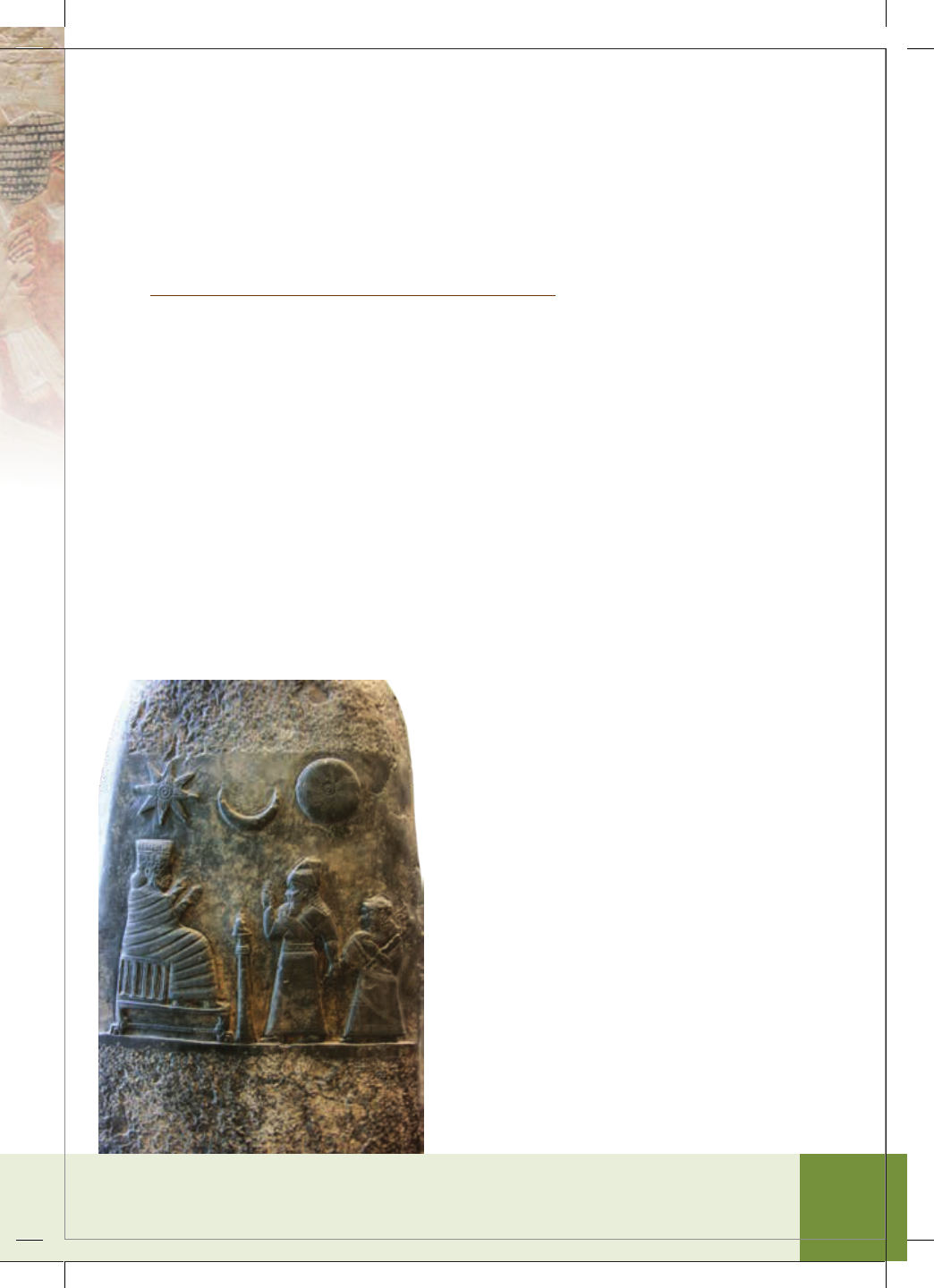
THE BAKER
ILLUSTRATED
BIBLE
BACKGROUND
COMMENTARY
Edited by
J. Scott Duvall and J. Daniel Hays
THE BAKER
ILLUSTRATED
BIBLE
HANDBOOK
Edited by
J. Daniel Hays and J. Scott Duvall
C
_Duvall-Hays_BackgroundComm0_AN_bb.indd 3_Duvall-Hays_BackgroundComm0_AN_bb.indd 3 2/10/20 1:40 PM2/10/20 1:40 PM

© 2020 by Baker Publishing Group
Published by Baker Books
a division of Baker Publishing Group
PO Box 6287, Grand Rapids, MI 49516-6287
www.bakerbooks.com
Printed in China
All rights reserved. No part of this publication may be reproduced, stored in a retrieval system,
or transmied in any form or by any means— for example, electronic, photocopy, recording—
without the prior wrien permission of the publisher. e only exception is brief quotations in
printed reviews.
Library of Congress Cataloging- in- Publication Data
Names: Hays, J. Daniel, 1953– editor. | Duvall, J. Sco, editor.
Title: e Baker illustrated Bible background commentary / edited by J. Sco Duvall and
J. Daniel Hays.
Description: Grand Rapids, Michigan : Baker Books, a division of Baker Publishing Group,
[2020] | Includes bibliographical references.
Identiers: LCCN 2019035113 | ISBN 9780801018374 (cloth)
Subjects: LCSH: Bible—Commentaries.
Classication: LCC BS491.3 .B345 2020 | DDC 220.7—dc23
LC record available at hps://lccn.loc.gov/2019035113
Unless otherwise indicated, Scripture quotations have been taken from the Christian Standard
Bible®, copyright © 2017 by Holman Bible Publishers. Used by permission. Christian Standard
Bible® and CSB® are federally registered trademarks of Holman Bible Publishers.
Scripture quotations labeled NASB are from the New American Standard Bible® (NASB), copyright
© 1960, 1962, 1963, 1968, 1971, 1972, 1973, 1975, 1977, 1995 by e Lockman Foundation.
Used by permission. www.Lockman.org
Scripture quotations labeled NIV are from the Holy Bible, New International Version®. NIV®.
Copyright © 1973, 1978, 1984, 2011 by Biblica, Inc.™ Used by permission of Zondervan. All
rights reserved worldwide. www.zondervan.com. e “NIV” and “New International Version” are
trademarks registered in the United States Patent and Trademark Oce by Biblica, Inc.™
Scripture quotations labeled NRSV are from the New Revised Standard Version of the Bible,
copyright © 1989 National Council of the Churches of Christ in the United States of America.
Used by permission. All rights reserved.
Scripture quotations labeled RSV are from the Revised Standard Version of the Bible, copyright
1946, 1952 [2nd edition, 1971] National Council of the Churches of Christ in the United States
of America. Used by permission. All rights reserved worldwide.
20 21 22 23 24 25 26 7 6 5 4 3 2 1
_Duvall-Hays_BackgroundComm0_AN_bb.indd 4_Duvall-Hays_BackgroundComm0_AN_bb.indd 4 2/10/20 1:40 PM2/10/20 1:40 PM

vii
Contents
Acknowledgments xi
Contributors xii
Introduction J. Daniel Hays and J. Sco Duvall xxiv
e Old Testament
Introduction to the Old Testament J. Daniel Hays
3
General Background Articles
e Assyrians Gary V. Smith 15
e Babylonians Douglas J. E. Nykolaishen 21
e Canaanites and Canaanite Religion Catherine L. McDowell 27
e Cushites J. Daniel Hays 32
Daily Life in Ancient Israel H. H. Hardy II 37
e Egyptians Safwat Marzouk 42
Musical Instruments in Israel and the Ancient Near East J. Daniel Hays 48
e Persians Mark J. Boda 52
e Philistines Catherine L. McDowell 60
Prophets in the Old Testament World Samuel A. Meier 63
Warfare in the Old Testament Boyd Seevers 65
Women in the Old Testament World Mark W. Chavalas 69
Women’s Fashion in the Old Testament World Marcella Barbosa 74
Commentary
Genesis Tremper Longman III 81
Exodus Eric Alan Mitchell 121
Leviticus R. Dennis Cole 149
Numbers Roy E. Gane 169
_Duvall-Hays_BackgroundComm0_AN_bb.indd 7_Duvall-Hays_BackgroundComm0_AN_bb.indd 7 2/10/20 1:40 PM2/10/20 1:40 PM

viii
Contents
Deuteronomy Michael A. Grisanti 187
Joshua Boyd Seevers 207
Judges Boyd Seevers 227
Ruth J. Andrew Dearman 251
1–2 Samuel Robert B. Chisholm Jr. 259
1–2 Kings Catherine L. McDowell 293
1–2 Chronicles Samuel A. Meier 329
Ezra–Nehemiah Gregory Goswell 371
Esther Constance E. Clark Gane 391
Job John E. Hartley 401
Psalms Christine Brown Jones 423
Proverbs Richard L. Schultz 459
Ecclesiastes Richard L. Schultz 475
Song of Songs Gordon H. Johnston 485
Isaiah Gary V. Smith 495
Jeremiah Gary E. Yates 535
Lamentations Gary E. Yates 571
Ezekiel Mark F. Rooker 579
Daniel William B. Nelson 607
Hosea J. Andrew Dearman 623
Joel Mark W. Chavalas 633
Amos M. Daniel Carroll R. 637
Obadiah M. Daniel Carroll R. 650
Jonah M. Daniel Carroll R. 653
Micah Stephen G. Dempster 659
Nahum Gordon H. Johnston 667
Habakkuk James K. Bruckner 671
Zephaniah Jason S. DeRouchie 676
Haggai George Athas 680
Zechariah George Athas 685
Malachi William B. Nelson 694
Intertestamental History Larry R. Helyer 699
e New Testament
Introduction to the New Testament J. Sco Duvall
705
General Background Articles
Ancient Leer Writing E. Randolph Richards 716
Athletics in the New Testament World Bernie A. Cueto 718
Banquets and Meals in the Greco- Roman World E. Randolph Richards 720
(Unpublished manuscript—copyright protected Baker Publishing Group)
_Duvall-Hays_BackgroundComm0_AN_bb.indd 8_Duvall-Hays_BackgroundComm0_AN_bb.indd 8 2/10/20 1:40 PM2/10/20 1:40 PM

ixContents
Baptism in the New Testament World Rodney Reeves 722
e City of Ancient Rome Alan S. Bandy 724
e City of Corinth Mariam Kamell- Kovalishyn and Josiah McDermo 727
e City of Ephesus Mark Wilson 729
Crucixion Joseph R. Dodson 731
Demonization and Exorcism in the Greco- Roman World Bernie A. Cueto 733
e Family of Jesus Andreas J. Köstenberger 735
Honor and Shame in the New Testament World Rodney Reeves 736
Hospitality in the New Testament World Dana M. Harris 738
Jerusalem in the Time of Jesus Mark L. Strauss 740
e Jerusalem Temple Mark L. Strauss 744
Jewish Festivals Andreas J. Köstenberger 747
Jewish Marriage Customs Alan S. Bandy 749
e Jewish Rite of Circumcision Roy E. Ciampa 751
e Jewish Synagogue Mark L. Strauss 753
Magic in the New Testament World Dana M. Harris 756
Messianic Expectations in Jesus’s Day Dana M. Harris 758
Money in the New Testament World E. Randolph Richards 761
New Testament Household Codes Dana M. Harris 763
Pharisees and Sadducees Andreas J. Köstenberger 765
Pontius Pilate Andreas J. Köstenberger 767
Roman Citizenship Alan S. Bandy 769
e Roman Military Alan S. Bandy 771
Roman Roads and Travel Mark Wilson 773
Roman Rule of Judea Mariam Kamell- Kovalishyn and Josiah McDermo 775
e Sabbath Andreas J. Köstenberger 778
Samaritans Andreas J. Köstenberger 780
e Sanhedrin Rodney Reeves 782
Scribes and Teachers of the Law Rodney Reeves 784
e Sea of Galilee and Fishing in the First Century Dana M. Harris 786
Shipping Practices in the First Century E. Randolph Richards 788
Slavery in the New Testament World Dana M. Harris 790
Traditional Greek and Roman Gods Mariam Kamell- Kovalishyn and Josiah
McDermo
792
Commentary
Mahew Rodney Reeves 795
Mark James R. Edwards 857
Luke Craig A. Evans 899
John Andreas J. Köstenberger 953
Acts Mark L. Strauss 1003
(Unpublished manuscript—copyright protected Baker Publishing Group)
_Duvall-Hays_BackgroundComm0_AN_bb.indd 9_Duvall-Hays_BackgroundComm0_AN_bb.indd 9 2/10/20 1:40 PM2/10/20 1:40 PM

x
Contents
Romans C. Marvin Pate
1067
1 Corinthians Mark E. Taylor 1093
2 Corinthians George H. Guthrie 1127
Galatians Roy E. Ciampa 1151
Ephesians Osvaldo Padilla 1167
Philippians Osvaldo Padilla 1177
Colossians Osvaldo Padilla 1185
1–2 essalonians Joseph R. Dodson 1191
1–2 Timothy, Titus Ray Van Neste 1205
Philemon Osvaldo Padilla 1222
Hebrews Dana M. Harris 1227
James Mariam Kamell- Kovalishyn and Josiah McDermo 1255
1–2 Peter Kelly D. Liebengood 1265
1–3 John, Jude David L. Turner 1281
Revelation Mark Wilson 1299
Abbreviations 1339
Notes 1348
Image Credits 1422
(Unpublished manuscript—copyright protected Baker Publishing Group)
_Duvall-Hays_BackgroundComm0_AN_bb.indd 10_Duvall-Hays_BackgroundComm0_AN_bb.indd 10 2/10/20 1:40 PM2/10/20 1:40 PM

676
— Micah
— Nahum
— Habakkuk
—
Zephaniah
— Haggai
— Zechariah
— Malachi
Zephaniah
J S. DR
Introduction. Zephaniah, a contemporary with Jeremiah in his early years
(and perhaps Nahum and Habakkuk), prophesied during the days of King
Josiah of Judah (640–609 BC), prior to the destruction of Jerusalem by the
Babylonians (586 BC). His preaching probably aided with Josiah’s reforms
around 622 BC (2 Kings 23:4–20; 2 Chron. 34:8–35:19). See the introduc-
tion in the commentary on Jeremiah.
Superscription (1:1)
Zephaniah son of Cushi (1:1). Zephaniah’s father is named “Cushi” (“the
Cushite”), connecting him to ancient Cush, the powerful and inuential black
African empire along the Nile River, south of Egypt, in what is modern- day
Sudan (see the article “e Cushites”). Perhaps his father was an ethnic
Cushite, or perhaps he looked like a Cushite (perhaps one of his parents
was a Cushite), or perhaps he was named “Cushi” in honor of the Cushites,
who had been allies with Judah against the Assyrians.
1
Son of Hezekiah (1:1). Zephaniah’s great- great- grandfather probably was
King Hezekiah, the faithful reformer and thirteenth king of Judah (729–
686 BC) (2 Kings 18–20; Isa. 36–38). Listing four generations of ancestors
was unusual, and this connection to King Hezekiah may be the reason for it.
Cushites from Africa bear-
ing tribute to the Egytian
pharaoh.
_Duvall-Hays_BackgroundComm2_AN_bb.indd 307_Duvall-Hays_BackgroundComm2_AN_bb.indd 307 2/5/20 3:20 PM2/5/20 3:20 PM

Zephaniah 1:8 677
Josiah (1:1). Josiah was Hezekiah’s great- grandson, a good king who
reigned in Judah from 640 to 609 BC and instituted much- needed religious
reform (2 Kings 22:1–23:20; cf. 2 Chron. 34:3–35:19).
Setting: A Call to Revere God (1:2–18)
I will completely sweep away everything (1:2). is echoes the warning
that God gave to Noah just prior to the ood (Gen. 6:7).
I will cut o every vestige of Baal (1:4). Baal was a prominent Canaanite
god, the god of storms, rain, and thus fertility (see the article “e Canaanites
and Canaanite Religion”).
e pagan priests along with the priests (1:4). is suggests two cor-
rupt groups of apostate priests: illegitimate priests of non- Levitical descent
(1 Kings 12:31–32; 13:33–34) and legitimate but still apostate Levitical
priests.
Who bow in worship on the rooops to the stars in the sky
(1:5). See
comments on Deut. 17:3; 2 Kings 17:16. Astral deities were common in the
ancient Near East. Although strictly forbidden by God (Deut. 4:19; 17:3–7),
they were worshiped both in the northern kingdom of Israel (2 Kings 17:16)
and in the southern kingdom of Judah (2 Kings 21:3–21; Jer. 8:2; 19:13).
Pledge loyalty to Milcom (1:5). Milcom (or Molech) is an Ammonite
god, oen associated with child sacrice
(Lev. 18:21; 20:2–5). Yet this term could
also be translated as “their king,” in which
case it would be a reference to Baal, the
Canaanite deity mentioned in 1:4.
He has consecrated his guests (1:7).
is likely refers to the Babylonians,
whom the Lord consecrated to destroy
Judah (cf. Isa. 13:3).
e ocials, the king’s sons (1:8).
ese were Judah’s public leaders as well
as members of the royal court.
All who are dressed in foreign cloth-
ing (1:8). is may indicate foreign inu-
ence in the royal court. Some suggest
that it refers to priests who worship for-
eign gods and thus dress in that foreign
tradition.
2
Mesopotamian king with astral deities above.
_Duvall-Hays_BackgroundComm2_AN_bb.indd 308_Duvall-Hays_BackgroundComm2_AN_bb.indd 308 2/5/20 3:20 PM2/5/20 3:20 PM

Zephaniah 1:9
678
All who skip over the threshold (1:9). is probably is a reference to a
pagan superstition about the entryway into a temple (1 Sam. 5:3–5).
Fish Gate . . . Second District
(1:10). e Fish Gate was one of the main
gates in Jerusalem, located on the vulnerable northern wall (2 Chron. 33:14;
Neh. 3:3). e Second District (NIV: “New Quarter”) was an expansion of
Jerusalem west of the Temple Mount started during the reign of Hezekiah
(2 Kings 22:14; 2 Chron. 34:22).
e Hollow (1:11). e “Hollow,” or “market district” (CSB footnote;
NIV), probably was located in one of the depressions in the Tyropoeon
Valley, between the Temple Mount and the Second District.
Who sele down comfortably (1:12). Literally, the Hebrew phrase is
“who thicken on their dregs.” e idiom refers to wine that would thicken and
become syrupy at the boom of the container (the dregs). e implication
is that the people were indierent and unmoved by the prophetic preaching.
eir silver and their gold (1:18). Sometimes an invading army could
be bought o by paying it tribute of silver and gold (cf. 1 Kings 20:3–4).
But in this case— the invasion by the Lord— that would prove ineective.
Alternatively, oen idols were constructed of silver and gold, and this may
be a metaphorical reference to the ineectiveness of the idols to deliver
Jerusalem.
Seek the Lord Together to Avoid Punishment (2:1–3:7)
Gaza . . . Ashkelon . . . Ashdod . . . Ekron (2:4). ese are four of the ve
main Philistine cities, which the Babylonian king Nebuchadnezzar destroyed
in 600 BC (see the article “e Philistines”). Gath’s absence from the list
suggests its earlier destruction by the Assyrians (Amos 6:2).
Philistines . . . Ammonites . . . Cushites . . . Assyria
(2:5–15)
. See the
articles “e Philistines”; “e Cushites”; “e Assyrians.” Zephaniah builds
a “compass” of punishment around Judah: the Philistines to the west (2:5–7),
the Moabites and Ammonites to the east (2:8–11), and the imperial powers
of the Cushites and Assyrians to the south and north (2:12–15).
Cherethites (2:5). e Cherethites are closely aliated with the Philistines
(Ezek. 25:16), and are perhaps a subgroup whose origin is associated with
the island of Crete (see the article “e Philistines”).
Moab . . . Ammonites
(2:8)
. Ammon and Moab were two neighboring
countries to the east of Judah (see comments on Gen. 19:37–38).
Like Sodom . . . like Gomorrah (2:9). e destruction of Sodom and
Gomorrah by God, described in Gen. 19:24–25, is used here as a graphic
metaphor for upcoming terrible judgment on Moab and Ammon. e con-
nection between this story and the Moabites and Ammonites is ironic, for
_Duvall-Hays_BackgroundComm2_AN_bb.indd 309_Duvall-Hays_BackgroundComm2_AN_bb.indd 309 2/5/20 3:20 PM2/5/20 3:20 PM

Zephaniah 3:17 679
Lot, the main character in the story of Sodom and Gomorrah, who survives
the judgment, was the progenitor of both the Moabites and Ammonites (Gen.
19:30–38), those who will now be judged as if in Sodom and Gomorrah.
Nineveh (2:13). Nineveh was the capital of Assyria, destroyed by the
Babylonians in 612 BC (see the article “e Assyrians”).
Roaring lions
(3:3). roughout the ancient Near East rulers oen were
depicted as lions in order to emphasize their strength and power (see com-
ments on Nah. 2:11–13). Here, these “lions” are preying on the very people
they were to protect.
Wait on the Lord to Enjoy Satisfying Salvation (3:8–20)
Beyond the rivers of Cush (3:10). is likely refers to the White Nile and
the Blue Nile, the two main tributaries of the Nile River that were associated
with the empire of Cush (cf. Isa 18:1–2), which lay to the south of Egypt
(see the article “e Cushites”).
My holy mountain (3:11). is is a reference to Mount Zion in Jerusalem
(Ps. 121:1–2; 125:1–2; Isa. 2:2).
e L your God is among you, a warrior who saves (3:17). e
image of the Lord as a powerful warrior who ghts and defeats Israel’s en-
emies is common in the OT (e.g., Ps. 24:8; Isa. 42:13; 59:17). Likewise,
throughout the ancient Near East numerous deities were described and
depicted as strong, valiant warriors (see comments on Isa. 59:17).
_Duvall-Hays_BackgroundComm2_AN_bb.indd 310_Duvall-Hays_BackgroundComm2_AN_bb.indd 310 2/5/20 3:20 PM2/5/20 3:20 PM
